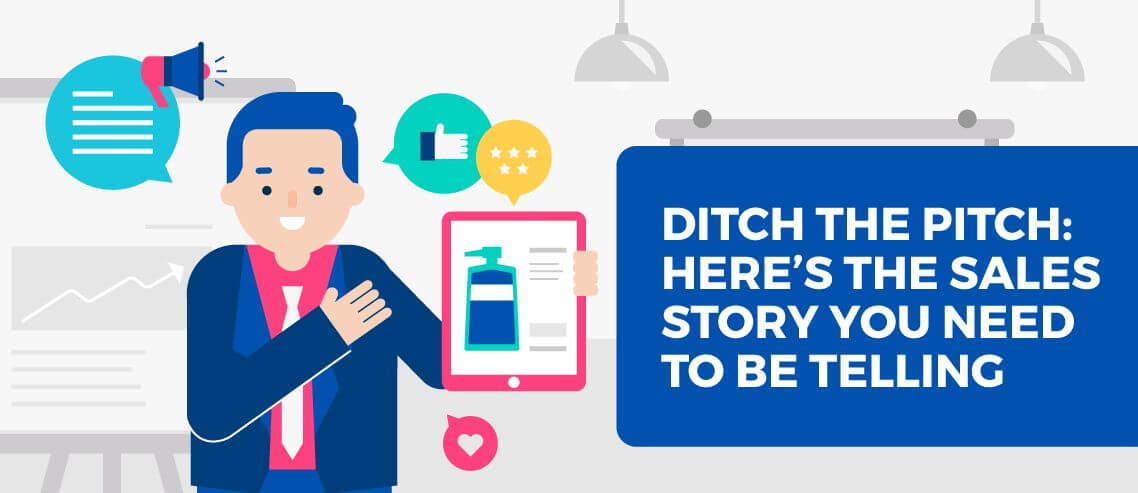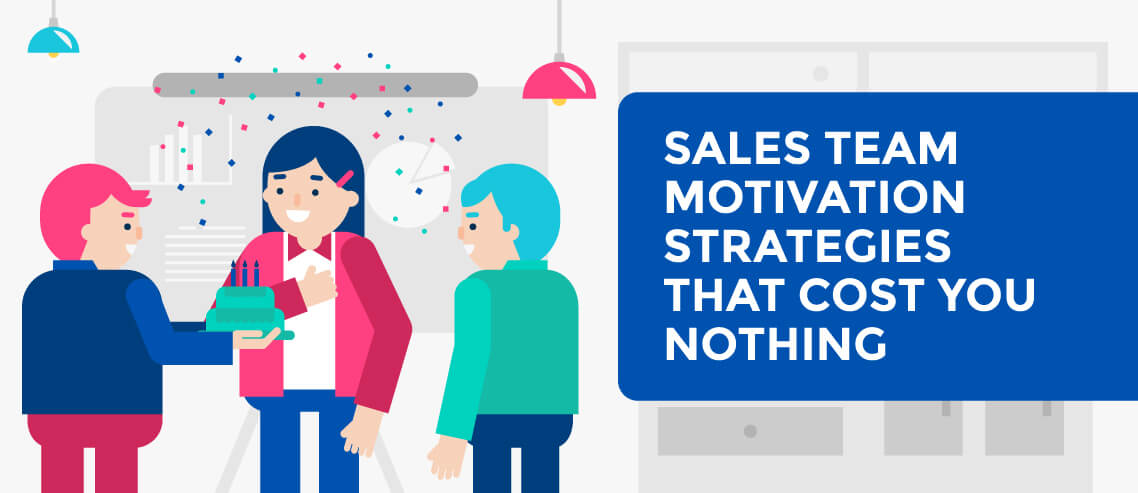Ditch the Pitch: Here’s the Sales Story You Need to Be Telling

Years ago, B2B selling was pretty straightforward. You showed up, pitched your product or service, offered some slick brochureware, and did your best to build a good relationship with customers. If you succeeded, you reaped the benefits of repeat business. But today’s buying climate is a bit more complicated.
Once rational and loyal, the modern B2B buyer has emerged as an emotional, mutable consumer with increased access to information about products, industry knowledge, and competitive intelligence. With more resources at their disposal, they’re empowered to conduct their own research and are often influenced by reviews, recommendations, and outsider opinions. According to CEB, 57% of a buyer’s decision is made before they even speak to a supplier.
As if that weren’t enough, a “convenience culture” created by companies including Amazon, Uber, and Netflix have left this new breed of buyer insatiated by anything less than a personalized, five-star customer experience. And to top things off? The entire world seems to have shifted to a remote work model overnight, making it even more difficult to capture your buyer’s attention and keep it.
How do you ensure when you finally engage, you’re presenting new and impactful information that inspires your buyer to purchase your product or service and do it now?
Tell a Value-Based Sales Story
In the digital age, your buyers can find everything they need to know about your product or service online. When you finally get the chance to speak with them, they’re looking for you to give them information they can’t find anywhere else. To feel confident in a purchase decision, they need you to effectively quantify and communicate your business value in the context of their business. How can your offering solve their specific business problems and help them meet their business goals?
Before you can lead a value-based sales conversation, you first need to understand what their business problems are. A discovery call can help you learn more about a company’s existing challenges or help them identify new ones based on your market research and knowledge of similar customers. Once you understand what’s holding them back, you can discuss more prescriptively how your offering can help them move forward. Bringing data that quantifies return on investment (ROI) or total cost of ownership (TCO) to the conversation can help you differentiate your product or service from the competition and help the customer prioritize the purchase of your solution over other critical business initiatives.
The CLOSE methodology provides a great framework for guiding these consultative, value-based sales conversations.
Challenge: What is your buyer’s priority business problem?
Loss: What is the cost of inaction?
Opportunity: What is the upside of fixing the problem?
Solution: How can your product or service help the buyer address the problem?
Evidence: What business results have customers with similar problems achieved using your product or service?
Keep Your Sales Story Consistent Across Every Touchpoint
As you craft your challenge- or value-based sales story, bear in mind that 67% of the buyer’s journey is now done digitally (SiriusDecisions). It’s not enough to simply change the way your sales reps are communicating with prospects in sales meetings. You must fundamentally change your sales and marketing approach across every channel in which you’re engaging buyers. While buyers will inevitably ask to see product demonstrations or brochures focused on features and capabilities at some point in the buying process, content leveraged in the early stages of an opportunity should remain benefit-driven. The best way to qualify a purchase and create a sense of urgency in your buyer’s mind is to quantify exactly how much the problem is costing them.
Support Your Sales Story with the Right Sales Tools & Technology
Sales technology can help you ensure a consistent, value-based sales story is implemented at every touchpoint along the buyer journey. While formulating your sales enablement strategy, consider the following tools to optimize your chances of success:
Content Management + Presentation Software – A sales enablement platform like Mediafly allows you to store, manage, distribute, search, share and present content (pdf, PowerPoint, video, Word, etc.) all from one intuitive sales application, anywhere, whether online or offline. Marketers can rest assured that every piece of information buyers see is up-to-date, on-brand and on-message, while sellers can easily access all of the content they need to prepare for sales meetings and lead more personalized and impactful sales conversations in real-time with buyers.
Interactive Value Selling Tools – ROI and TCO calculators that capture data from your buyer in real-time should be deployed to help sales organizations formulate their value story and ensure it gets communicated in every deal cycle. They can be leveraged as self-service tools for prospects visiting your website to introduce value into the conversation as early as possible and/or as guided selling tools for sales reps to use to clinch deals in one-to-one sales meetings.
Learning Management System (LMS) – When you’re teaching sellers how to sell versus what to sell, traditional, one-time, classroom-style training isn’t enough. An LMS like Lessonly, MindTickle or SAP Litmos offers the ability to continuously educate sellers via short, microlearning modules. And the benefits of using an LMS go beyond just onboarding and training sellers faster. Companies that leverage learning management systems can track who completes each module, how well they scored, and identify who needs further training.
Campaign Management – According to Corporate Visions, 74% of customers purchase from the first supplier to provide value. Don’t wait for a face-to-face sales call to incorporate value into your sales story. Leveraging sales engagement software like Mailshake, sales organizations can build personalized, value-based sales outreach cadences for email, phone and social, ensuring your value proposition is introduced early and increasing the likelihood of a sales meeting.
Changing your sales approach from product-focused to value selling can have a lasting impact on your business. Strategically implementing sales tools and technology to support that approach is proven to improve win rates, increase buyer satisfaction and drive more revenue.
What are you doing to address today’s complex buying environment and better engage potential customers? Tell us in the comments below.





